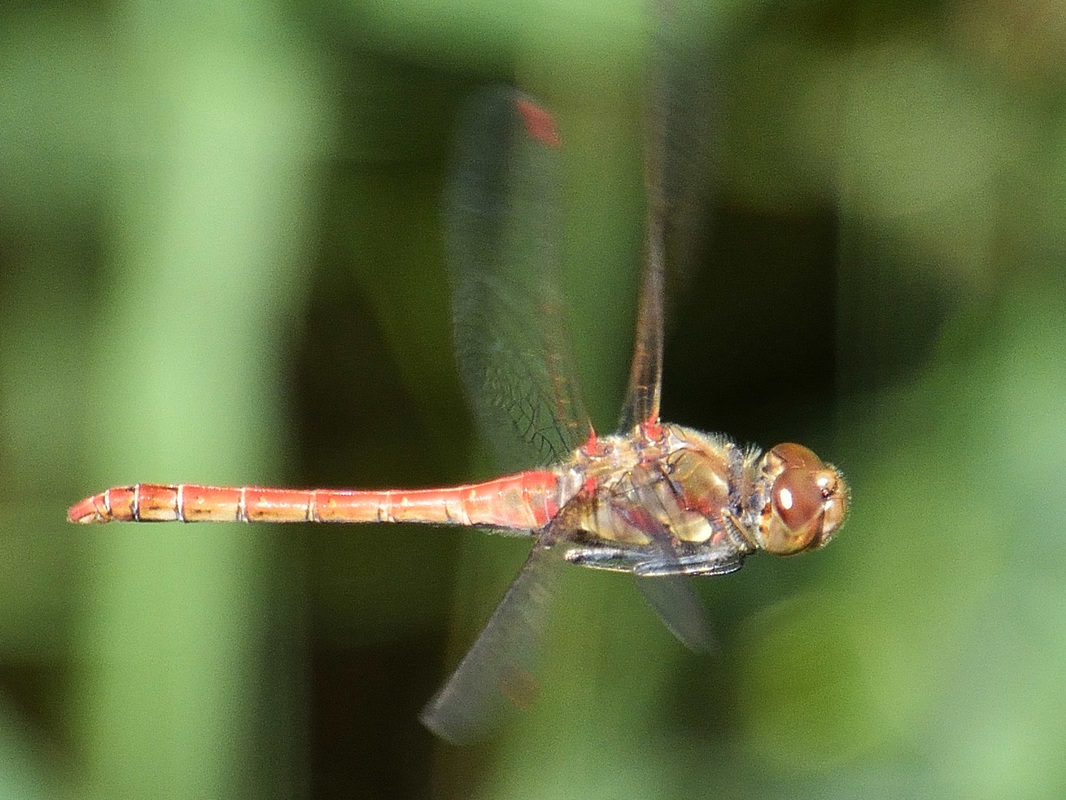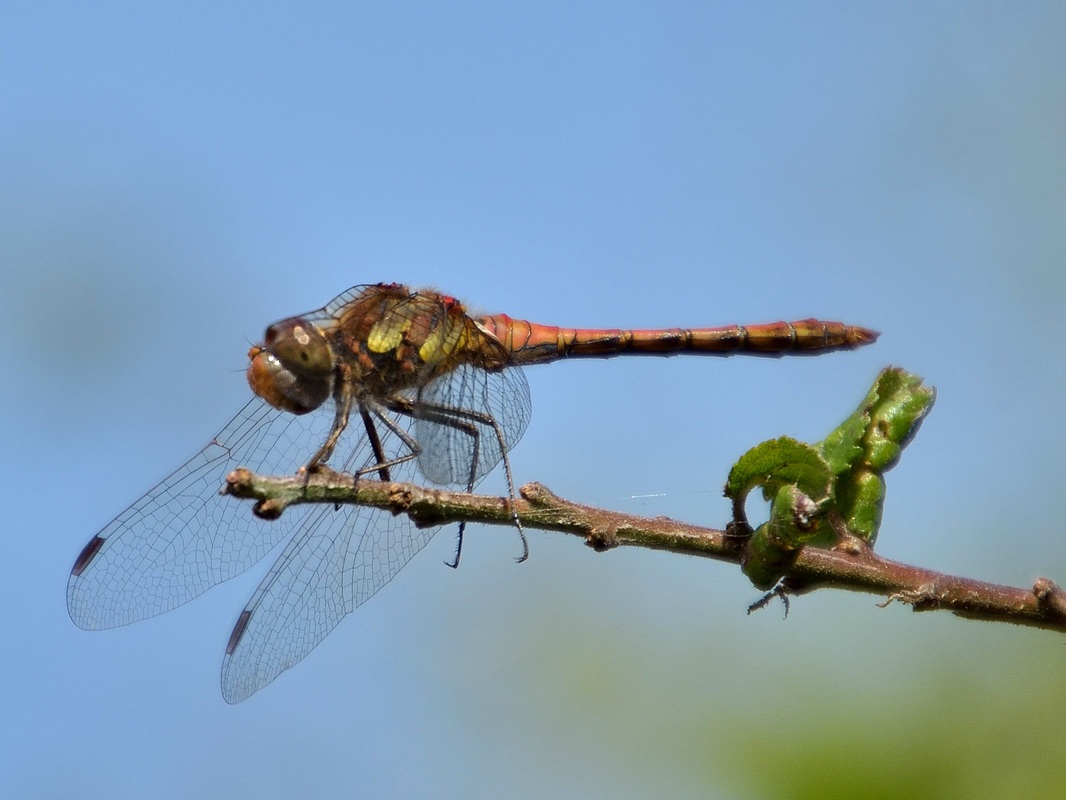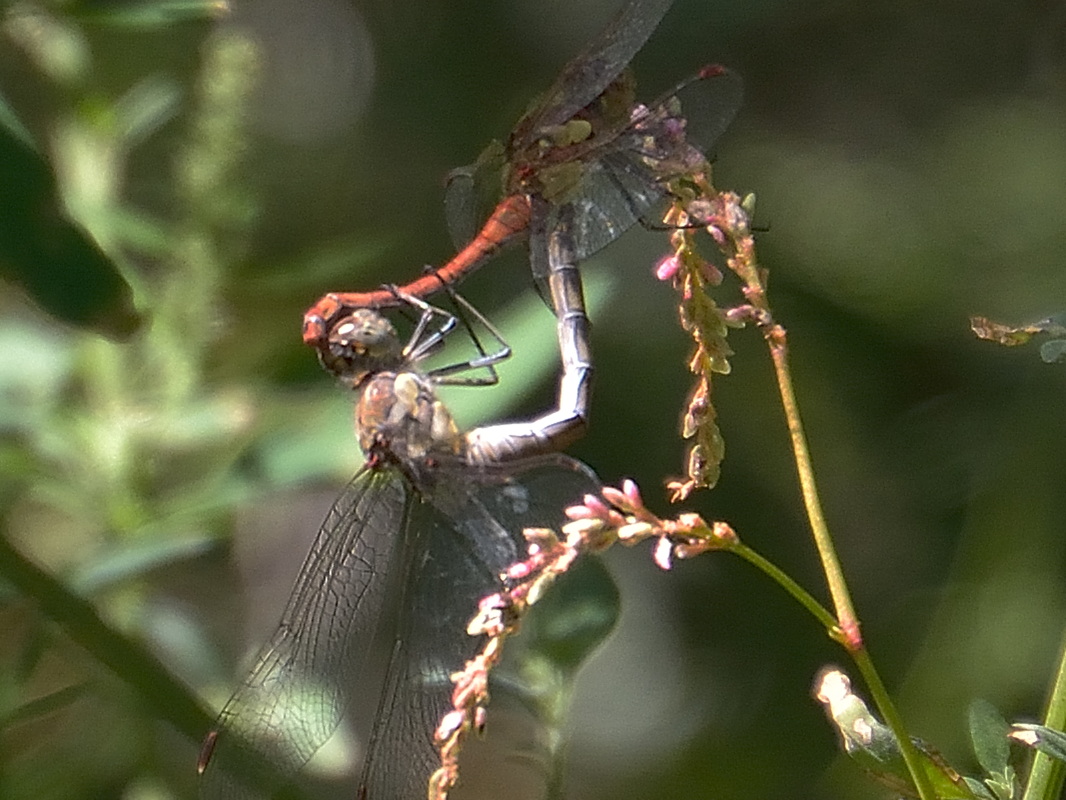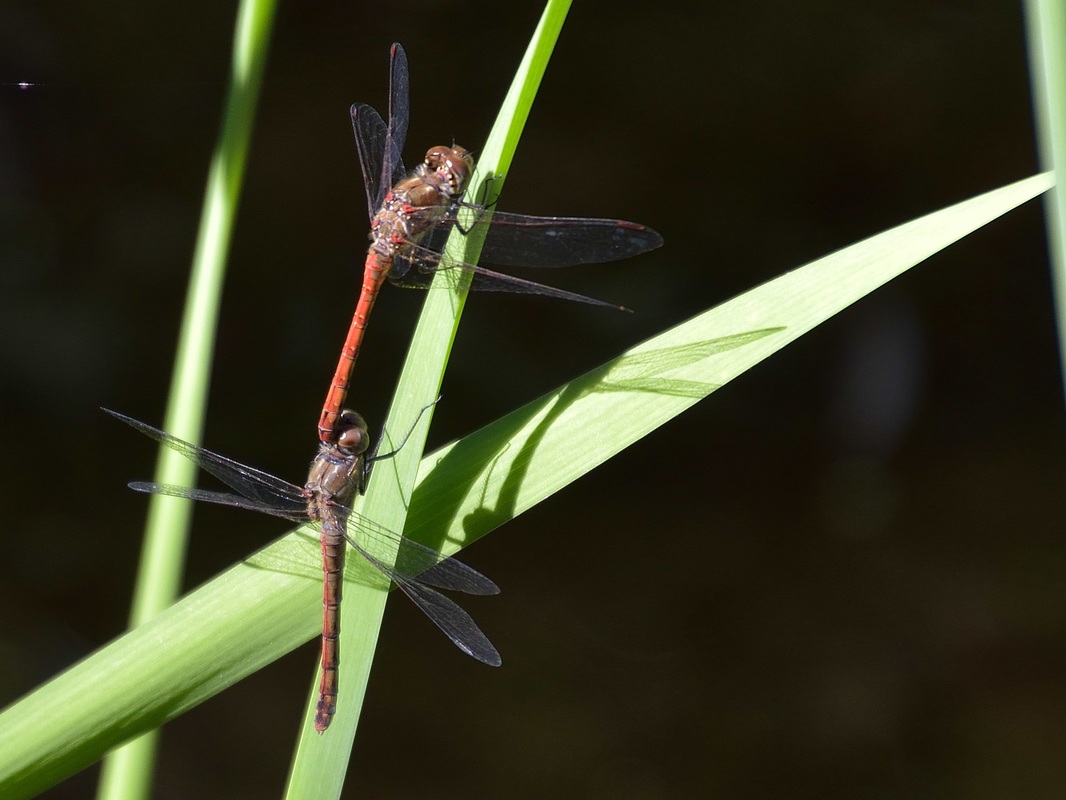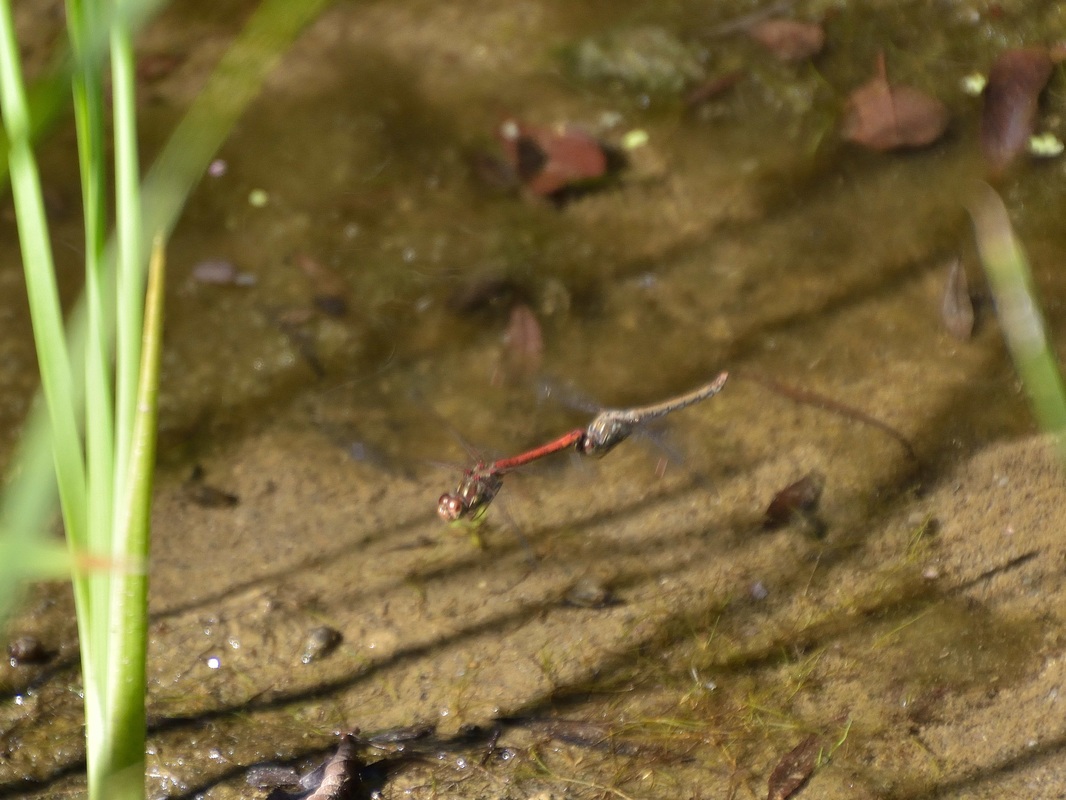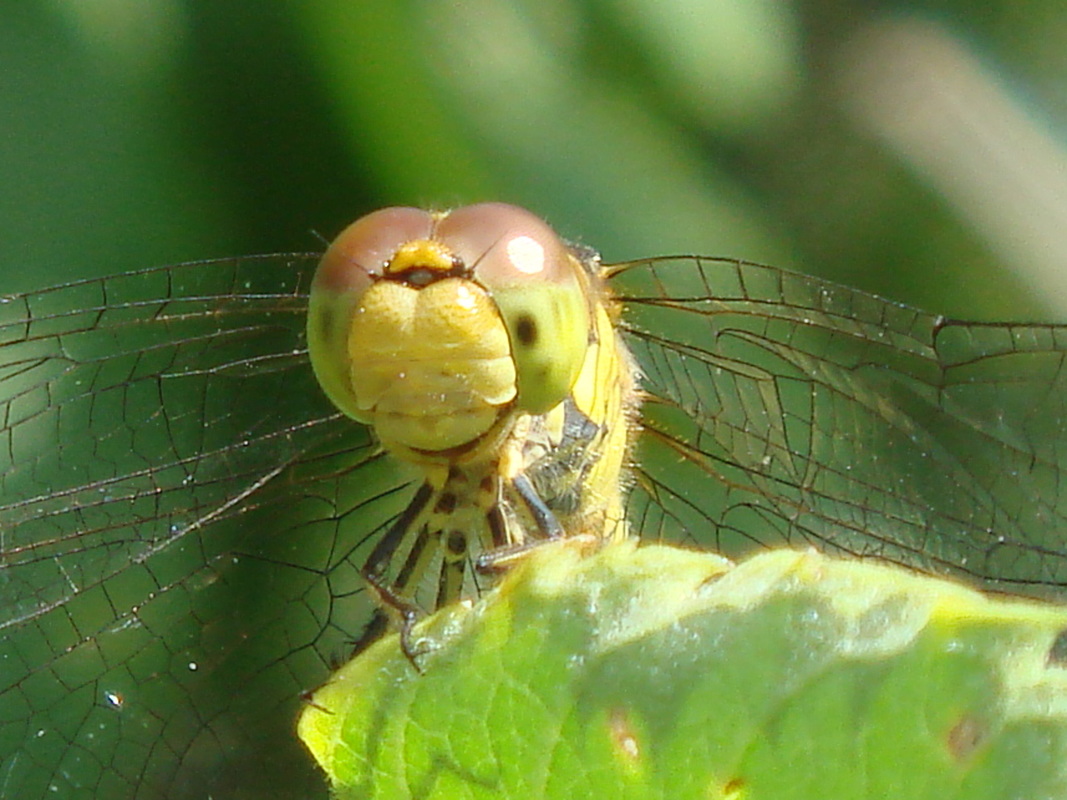One of my passions being dragonflies, the other day I was wandering along some nether reaches of the river Tech when I came across dragonfly activity that I had never seen before.
The dragonfly, after emerging from it larval stage and becoming a flying insect, has two objectives - to eat and to reproduce. They usually eat other small insects which they hunt and catch in mid-air. The regular technique for common darters is to perch on a prominent leaf or twig, and ambush its prey by rushing after it and catching it.
In Wikipedia it is said that "Eggs are not laid, but broadcast from the air: the male holds the female in tandem and swings her down and forward over water. At the furthest point of the arc the female releases some of her eggs to fall on the water." From what I saw this is not always correct. During my observation the female's abdomen normally touched the water or floating weed. This is backed up by an article in a paper, written in 1951 by NW Moore of the Zoology Department at the University of Bristol. It refers to the female's abdomen during oviposition repeatedly dipping into the surface of the water, mud or weed; this process being often interrupted by short flights.
While common darters are seen en masse during migrations, despite fairly extensive research I have not been able to find any record of mass ovipositing, which makes me think that it is an unusual phenomenon.
Another interesting fact is that it seems that weather can affect dragonfly behaviour as the Bristol University paper recorded that at one point cloud had prevented ovipositing activity for a short time on the day of their research; on the day of my observation there was a cloudless sky, the temperature was in the mid-20s with no wind, ideal conditions I suppose.
Here is a short video showing the ovipositing, although I fear it doesn't give the impression of the large number of darters that were active at the time.
